Well now, this is just what was missing in our lives. A rear view camera
for your bike. Just strap the camera firmly under the seat and attach
the display to the handlebars. Kind of looks like a GPS navigation
system, but in reality you get a view of what’s behind you. Yep, it
replaces those silly bicycle rearview mirrors, but you might still want
to turn your head and get a good look in critical situations. The Owl 360 retails for $200. Cool gizmo or total nonsense? 03 more images after the break...
Just to have a page for me too in this internet ocean. I dont create anything, its always a copy+paste from Internet.
Sunday, July 14, 2013
Friday, April 19, 2013
Touching Moment
Pictures that cause the most intense
emotions, touch a nerve and touched to tears. Sometimes the picture is
more than just another moment in the life of a person. Sometimes even a
single random shot can tell a lot or cause the strongest emotions. Each
shot, as his story touched to the core. These photos tell about the
past, learn a lot about this and stop immediately for the future.
Loyalty
Mary McHugh mourns her slain fiance, Sergeant James Regan. "Sector 60" -
a new area of ??a large cemetery in Washington - was the last refuge of
hundreds of U.S. soldiers killed in Iraq and Afghanistan. John Moore. 24 more images after the break...
Thanks
Picture of a man giving his shoes homeless in Rio de Janeiro. The girl began to cry.
True friendship
Hugs Lion Jupiter and Anna Torres, founder of the animal shelter. Columbia.
Hope Springs Eternal
So cry heroes
Dignity
The strength of the human spirit
Faithful companion
Dog on the grave of his master.
Unforgettable moment of happiness
Power of Justice
Last
WWII veteran sitting on a bench, waiting, hoping to see friends from his unit.
Companion in misfortune
Rhythm
My father is 29, I - 2 weeks.
I'm 29, my son - 2 weeks.
Death of a Hero
Funeral dog who saved thousands of lives during the terrorist attacks in Mumbai in 1993, found 3 tons of explosives.
Meeting with his father
Meeting of generations
These values
Boy saves her cat during a flood.
Twin soul
Willpower
36 years Aimee Mullins
was born with fibular hemimelia (missing fibula bones) and, as a
result, had both of her legs amputated below the knee when she was one
year old. A graduate of Parkland High School in Allentown and Georgetown
University in Washington, D.C., she took up sports and acting at an
early stage.
Also while at Georgetown, Mullins won a place on the Foreign Affairs
internship program, working at The Pentagon. She also makes appearances
as a speaker on topics of body, identity, design, and innovation.
GMO
Compassion
Unexpected turn of events
True calling
Remember all
Bright faith in the future
Thanks to Source: ritemail.blogspot.com
Sunday, March 24, 2013
Skip the Fancy Gear
 Give Me Vision. Surreal Environmental Portraits by Budi CCline
Give Me Vision. Surreal Environmental Portraits by Budi CCline
Indonesia-based photographer and digital artist Budi “CCline”
taught himself how to create these painterly photos. With nothing more
than an old camera and an outdated version of Photoshop he brings to
life a body of work that mixes the natural landscape with the local
populations – human and animal, in a vivid, painterly style that is all
his own. His work is a great reminder that it doesn’t matter what tools
you use, it’s all about the vision. We reached out to CCline and my
friend Amy took notes about his work and creative life in Indonesia.
Insights a-plenty. Enjoy. -Chase.
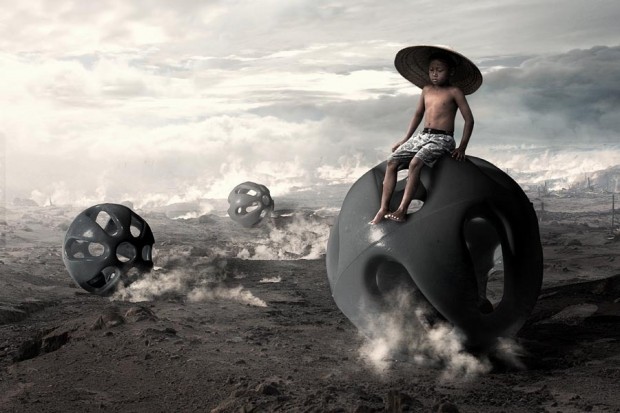
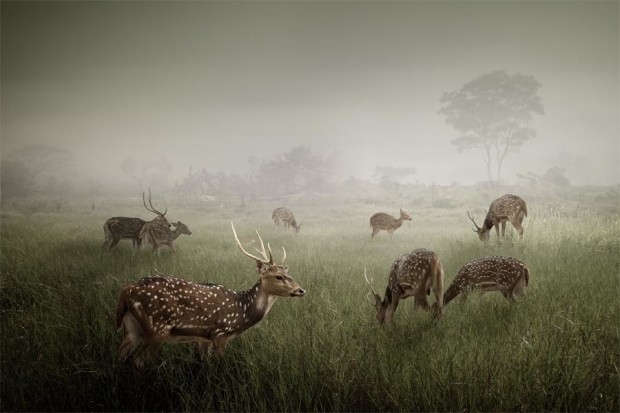
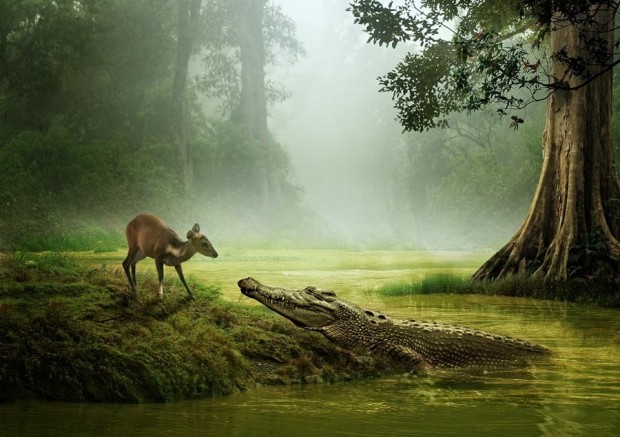
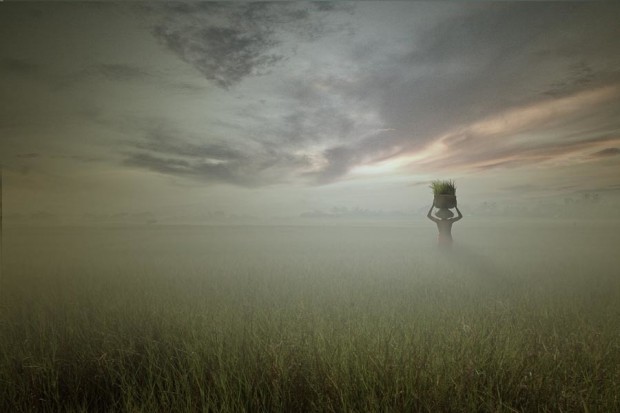
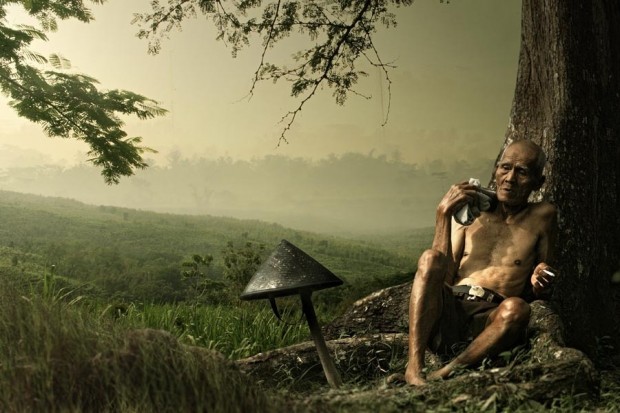
Check out more of Budi’s photos here.

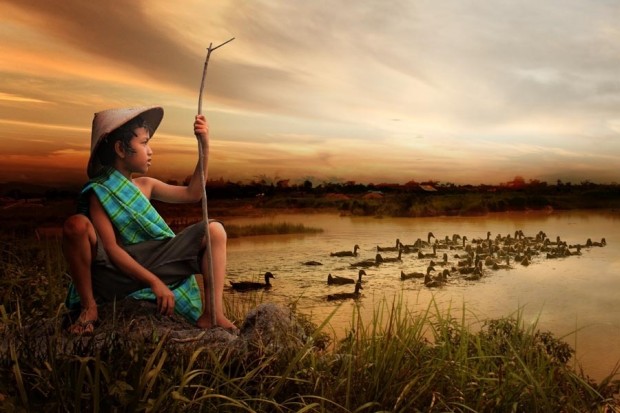





Check out more of Budi’s photos here.


Sunday, March 17, 2013
13 Scariest Freshwater Animals
01. Nile Crocodile
Photograph by Jonathan Blair, National Geographic
A year-old Nile crocodile attempts to snap up a frog in the St. Lucia
Estuary in South Africa (from the National Geographic book Visions of
Earth). Also known as the common crocodile, these large reptiles are
distributed across much of Africa, and they have earned their reputation
as among the most ferocious, deadly animals on the planet.
Male crocs typically measure from 11.5 to 16 feet long (3.5 to 5
meters), but they have been known to exceed 18 feet (5.5 meters) in
length. Individual crocodiles attack anything the same size or smaller
than them. They are occasionally known to hunt in packs, in which they
can take down animals as large as hippos and rhinos. Nile crocodiles
occasionaly prey on human beings, with estimates ranging from several
hundred to several thousand deaths a year.
The ancient Egyptians feared and revered Nile crocodiles and worked them
into their mystic religions. In modern times, the big animals were
heavily hunted for their leather, although recent protections have
helped stabilize the population at an estimated 250,000 to 500,000.
02. Snakehead
Photograph by Jason Edwards, National Geographic
Snakeheads are often feared in the West, where populations of the
aggressive fish have occasionally taken root as invasive species. After a
fisherman found a Northern snakehead (Channa argus) in a pond in
Maryland, it caused a media sensation. Biologists warned that the large
freshwater fish could readily become established in North America, where
it could wreak havoc on native ecosystems.
The voracious top-level predators can reach a length of three feet (one
meter). They prey on invertebrates, frogs, and smaller fish, though they
are known to attack anything moving when they are breeding.
Snakeheads can breathe air and can survive out of water for up to four
days. They can survive much longer periods of drought by burrowing into
the mud. Several species of the fish are native to much of Asia, where
they are commonly caught and are prized for the dinner table. They are
also frequently kept as aquarium fish and are noted for their aggressive
behavior.
03. Mata Mata
Photograph by Alessandro Mancini, Alamy
A mata mata (Chelus fimbriatus) is a freshwater turtle that inhabits the
Amazon and Orinoco basins in South America. The bizarre turtles are
entirely aquatic, although they prefer shallow, stagnant water, where
they can easily reach their head out of water to breathe.
The mata mata can grow quite large, up to 33 pounds (15 kilograms). They
feed on invertebrates and fish and aren't dangerous to people, despite
their appearance.
Mata mata are fairly sensitive to water quality, both in captivity and in the wild, so they can be harmed by pollutants.
04. Giant Catfish
Photograph by John Robertson, Alamy
Divers work with a model European catfish in the Great Lake at Ostersund
in Sweden. Large catfish live in many rivers throughout the world,
where they are important scavengers.
The largest on record is the Mekong giant catfish, which has reached
recorded sizes up to 10.5 feet (3.2 meters) and 660 pounds (300
kilograms). Once distributed across several countries in Southeast Asia,
the Mekong giant catfish is now critically endangered, thanks to
habitat disruption. Not much is known about the world's biggest
freshwater fish, although conservation efforts are underway.
Big catfish are rarely considered dangerous to people. The Mekong species can live to be more than 60 years old.
05. Diving Bell Spider
Photograph by Gerhard Schulz, Getty Images
The diving bell spider (Argyroneta aquatica) is the only known spider in
the world that lives entirely underwater. Like other arachnids, it must
breathe air, but it provides its own supply by forming a bubble, which
it holds by hairs on its legs and abdomen. The spiders must occasionally
return to the surface to replenish their air supply, although some gas
exchange happens across the surface of their bubbles, so they don't have
to come up very often.
The diving bell spider is found in northern and central Europe and parts
of northern Asia. Unusual for spiders, the males are bigger than the
females, perhaps because the males are more active hunters.
The spiders can inflict a painful bite that is often accompanied by
feverish symptoms. Those who are afraid of spiders may be disturbed to
know they may not be safe from them, even in the water.
06. Anaconda
Photograph by Elwin R. Sanborn, National Geographic
Animal handlers hold a 19-foot anaconda at the Zoological Gardens. Among
the world's largest snakes, anacondas live in rivers and wetlands of
South America. The word anaconda is thought to come from the Tamil word
anaikolra, which means elephant killer, alluding to the reptile's
fearsome reputation.
Anacondas feed on fish, birds, reptiles, and small mammals, though they
have been known to take the occasional domestic animal. The big snakes
can be dangerous to people, though reports of deliberate predation are
very rare.
Like other boas, anacondas are nonvenomous, and they often kill their
prey by constricting it. Like other snakes, they swallow their prey
whole.
07. Giant Freshwater Stingray
Photograph by Fenolio Dante, Getty Images
Freshwater stingrays are known to inhabit rivers in Southeast Asia and
northern Australia, where they can reach enormous proportions, measuring
up to 16.5 feet (5 meters) long and up to 1,320 pounds (600 kilograms).
However, very little is known about these creatures, including how many
are left, and if they ever enter saltwater.
Freshwater stingrays are hard to see, because they often bury themselves
in river sediments. They hunt for clams and crabs by detecting their
electric impulses. There are reports of the big animals overturning
boats, though they rarely attack people.
Even so, stingrays can pack a powerful punch; they have a barb at the
base of their tail that contains deadly poison and a stinger as long as
15 inches (38 centimeters).
Many scientists fear that freshwater stingrays are threatened by habitat loss and pollution.
08. Vampire Fish
Photograph by Peter McBride, National Geographic
Fanged vampire fish, or payara (Hydrolycus scomberoides), are offered at
a market in Pevas, Peru, on the Amazon River. This fearsome,
little-known fish is prized for its meat in the Amazon and Orinoco
basins.
Vampire fish prey primarily on smaller fish, especially piranhas, which
they impale with their long, sharp fangs. The intimidating teeth can
grow up to six inches long.
09. Candiru
Photograph by Max Gibbs, Getty Images
Perhaps the most feared freshwater species of all, candiru are parasitic
catfish in the family Trichomycteridae. These small, narrow fish
normally feed on the gills of larger fish in the Amazon. However, over
the past few centuries there have been reports of these creatures
lodging in the urethras of men and women.
Some native peoples along the Amazon have described means of preventing
such a disturbing infection, which is said to be hard to remedy, even
with surgery. Protection measures are said to include tough clothing,
tying off extremities with ligatures, and avoiding urination around
rivers. It was long believed that urine attracted the candiru, although a
recent study Candirurange.
10. Piranha
Photograph by Martin Shields, Alamy
Notorious for their sharp teeth and voracious appetites, piranhas
inhabit several of the major river basins in South America. These
omnivorous fish are known for their taste for meat, although attacks on
human beings are quite rare, despite breathless accounts from early
explorers.
In a historic visit to Brazil, Theodore Roosevelt famously saw a group
of piranhas shredding pieces of a cow carcass in seconds. His dramatic
account would color popular imagination for years, even though it was
based on a manipulated spectacle in which fishermen blocked off a group
of the fish and starved them beforehand.
Still, piranhas are important scavengers and predators in their native
rivers, and they often resort to cannibalism if food gets scarce. It's
true that local fishermen occasionally have scars from close encounters
with them.
It's unknown how many species of piranhas exist, with estimates ranging from 30 to 60. —Brian Clark Howard.
11. Goliath Bird-Eater Spider
Photograph by John Mitchell, Getty Images
The second largest spider in the world, the goliath bird-eater
(Theraphosa blondi), is related to the tarantula. It received its
fearsome name after Victorian explorers witnessed one feasting on a
hummingbird.
The big spiders inhabit marshy land in the rain forests of nothern South
America, where they can grow to a leg span of up to 12 inches (30 cm)
and can weigh more than 6 ounces (170 grams). As with many other
spiders, females may eat the males after mating. Partially as a result,
males have a lifespan of 3 to 6 years, while females have a lifespan of
15 to 25 years.
Despite the spider's name, birds are not the main prey of the goliath
bird-eater. They prefer to eat insects and other invertebrates, although
they will occasionally eat small vertebrates. The big spiders are not
generally considered dangerous to human beings, although they can bite
if disturbed, leaving a wound about as painful as a wasp sting. They can
also release hairs that irritate the skin.
12. Electric Eel
Photograph from Bettman Archive/Corbis
Electra the electric eel (Electrophorus electricus) demonstrates her
shocking power at Ford Motor Company's "Cycle of Production" exhibit at
the 1939 New York World's Fair. Despite their name, electric eels are
actually a type of knifefish and are more closely related to catfish
than they are to true eels. These unusual fish inhabit waterways in the
Amazon and Orinoco basins of South America, where they hunt prey and
defend themselves by producing powerful bursts of electricity.
Electric eels gulp air from the surface in order to breathe. Thanks to
specialized internal organs, they can produce pulses of electricity
greater than 500 volts, with a current greater than one amp. That's
enough to kill an adult human being.
Electric eels mostly hunt invertebrates, though adults also consume fish
and small mammals. They only attack human beings if they are disturbed.
They tend to live in murky, stagnate waters. Scientists have long been
fascinated by the species and have probed its impressive electrical
abilities.
13. Tiger Fish
Photograph by Chris Johns, National Geographic
Widely distributed across much of Africa, tiger fish are fierce
predators with large, razor-sharp teeth. They often hunt in packs and
occasionally eat large animals. Attacks on human beings are rare but not
unheard of.
The two largest species are the goliath tiger fish (Hydrocynus goliath)
and the Hydrocynus vittatus, which is commonly called the tiger fish.
Both are prized as game fish. The goliath tiger fish, which can reach
sizes up to 110 pounds (50 kg), is found in the Congo River and Lake
Tanganyika. The tiger fish can weigh up to 33 pounds (15 kg) and is
found in the Zambezi River system.
Thanks to source: ritemail.blogspot.in/2013/03/13-scariest-freshwater-animals-national.html
Thursday, March 14, 2013
Seven Mile Bridge
The Seven Mile Bridge is a famous bridge in the Florida Keys, in Monroe
County, Florida, United States. It connects Knight's Key (part of the
city of Marathon, Florida) in the Middle Keys to Little Duck Key in the
Lower Keys. Among the longest bridges in existence when it was built, it
is one of the many bridges on US 1 in the Keys, where the road is
called the Overseas Highway.
There are two bridges in this location. The older bridge, originally
known as the Knights Key-Pigeon Key-Moser Channel-Pacet Channel Bridge,
was constructed from 1909-1912 under the direction of Henry Flagler as
part of the Florida East Coast Railway's Key West Extension, also known
as the Overseas Railroad.
History — After the railroad sustained considerable damage due to
effects of the Labor Day Hurricane of 1935, the line was sold to the
United States Federal Government, who subsequently refurbished Seven
Mile Bridge for automobile use. Dismantled trackage was recycled,
painted white, and used as guardrails. It had a swing span that opened
to allow passage of boat traffic, near where the bridge crosses Pigeon
Key, a small island where a work camp for Flagler's railroad was
located. Hurricane Donna in 1960 caused further damage.
The current road bridge was constructed from 1978 to 1982. The vast
majority of the original bridge still exists, used as fishing piers and
access to Pigeon Key, but the swing span over the Moser Channel of the
Intracoastal Waterway has been removed. 10 images after the break...
Engineering — The new bridge is a box-girder structure built from
precast, prestressed concrete sections, comprising 440 spans. Near the
center, the bridge rises in an arc to provide 65-foot (20 m)-high
clearance for boat passage. The remainder of the bridge is considerably
closer to the water surface. The new bridge does not cross Pigeon Key.
The total length of the new bridge is actually 35,862 ft (10,931 m) or
6.79 miles (10.93 km), and is shorter than the original. Each April the
bridge is closed for approximately 2.5 hours on a Saturday and a "fun
run," known as the Seven Mile Bridge Run, of 1,500 runners is held
commemorating the Florida Keys bridge rebuilding project. The event
began in 1982 to commemorate the completion of a federally funded bridge
building program that replaced spans that oil tycoon Henry Flagler
constructed in the early 1900s to serve as a foundation for his Overseas
Railroad.
The Seven Mile Bridge was engineered by Figg & Muller Engineers. The
structure was completed six months ahead of schedule and has earned
eight awards, including an Exceptional Award for Cost Savings Innovation
from the Federal Highway Administration.
Friday, March 8, 2013
Folding Scooter
|
Wednesday, January 9, 2013
Fastest way to lose weight
Thanks to Source :
" http://in.lifestyle.yahoo.com/photos/the-fastest-way-to-lose-weight-slideshow/ "
Worried about your growing belly? Confused about choosing a good diet plan? Well, here is one for you. If you want to lose weight very quickly then GM diet plan may help you. This is the fastest and the healthiest way to lose weight. Trust us, we are not kidding. It is a famous program and is known worldwide for its quick success.
Lose 5kgs to 8kgs within 7 days
Reduces flab from the tummy area
Adds natural glow to the skin
Rids the body of the toxins and you actually feel light and happy .The diet plan will sound
outrageously cruel, but it becomes easy to follow if you complete the
first two days successfully. By successful completion, it is obviously
implied that you resist every single urge to break the diet regime.
However, you must get a nod from your doctor before attempting this
diet.
Day 1
Only fruits,
with the exception of bananas, litchi, mangoes and grapes. Eat lots of
watermelon, melon, pomegranates, apples, lime, oranges, strawberries and
any other fruit that you like. Eat 20 times a day, if you want to, but
only fruits.
**If you feel yourself craving for salt, then a tiny-winy ‘hajmola’ tab will help immensely.
Day 2
Only vegetables. Begin your day with one boiled potato with a tea-spoon of butter. For the rest of the day, eat only raw, boiled or otherwise cooked vegetables without oil. Don't eat more than one potato for the day. You can eat cabbage, carrots, cucumber, gourd and other vegetables. Add basil and oregano seasoning to them to make them more edible.
*If you make it through Day 2, then half the battle is won!*
Day 3
Basically a
combination of Day 1 and Day 2, which means you can eat fruits and
vegetables of your liking, but no bananas or potatoes. Eat to your
heart’s content and don’t forget to drink a lot of water.
Day 4
Bananas and Milk. You have the liberty to eat
almost 6 bananas and have up to 4 glasses of milk. Though, you were told
that bananas lead to weight gain, in this diet, the bananas act as a
source of sodium and potassium, since your salt intake during the GM
diet had reduced considerably. You can even have the highly diluted, yet
yummy vegetable soup (tomatoes, onions, capsicum and garlic). It is
such a respite after the three days on fruits and vegetables only.
Day 5
Another feast
day where you can eat sprouts, tomatoes and cottage cheese (paneer). You
could also eat chicken or soya chunks. Supplement your diet with the
wonder soup. Increase the intake of water on account of the urea
formation.
Day 6
Similar to Day 5, so you can eat sprouts, cottage
cheese, chicken, soya chunks and other vegetables. No tomatoes.
Supplement your diet with the wonder soup.
Day 7
It is the last day and you must be feeling very
light and happy. This day you can have fruit juice, a bowl of rice or
half roti, and any vegetable that you want to eat. If you are trying to
lose to weight for a special occassion then you should try this diet at
least two months before that. Also, you should maintain a gap of three
to seven days between subsequent regimes.
Subscribe to:
Posts (Atom)



























































